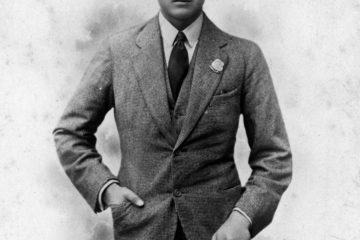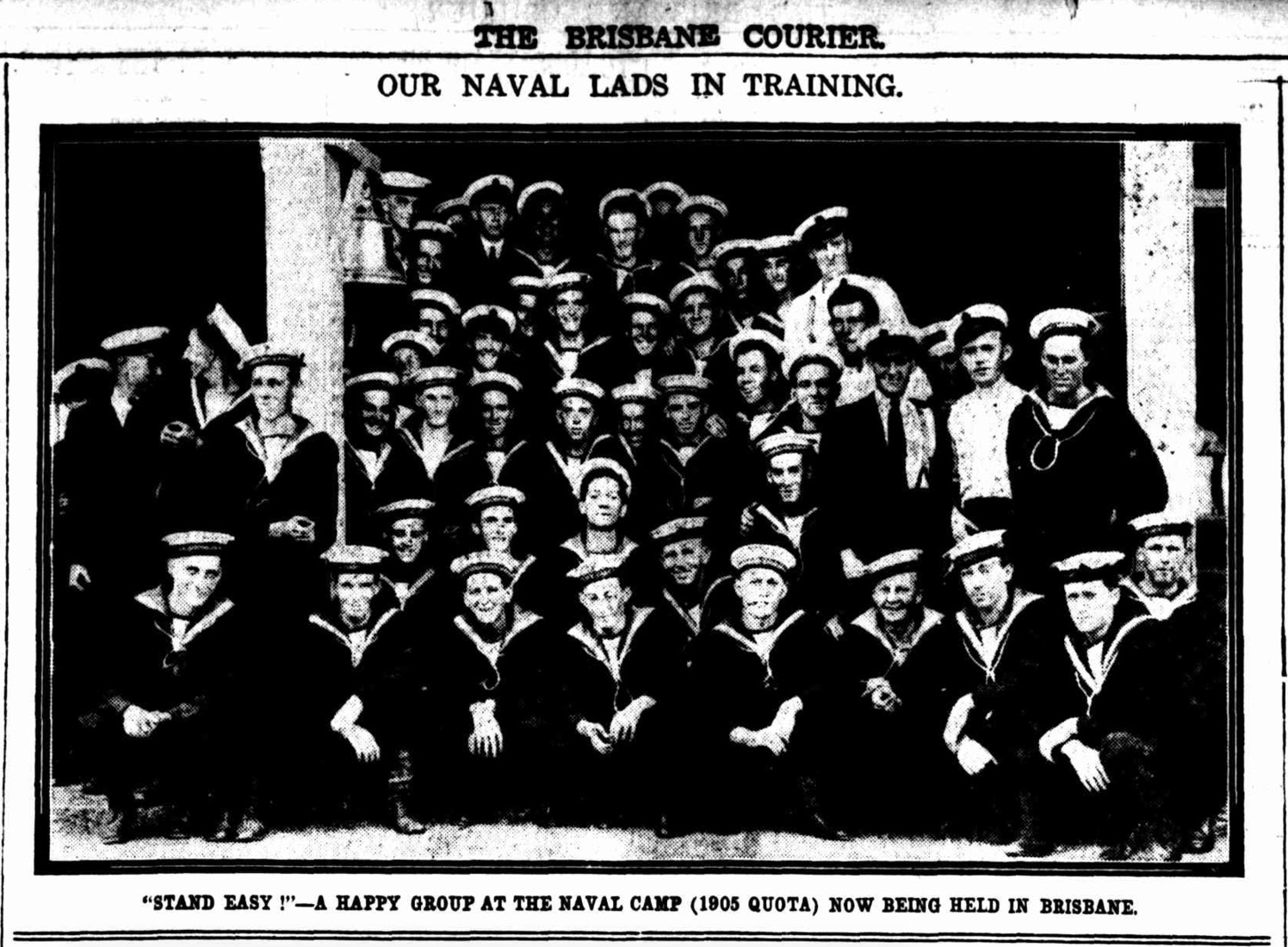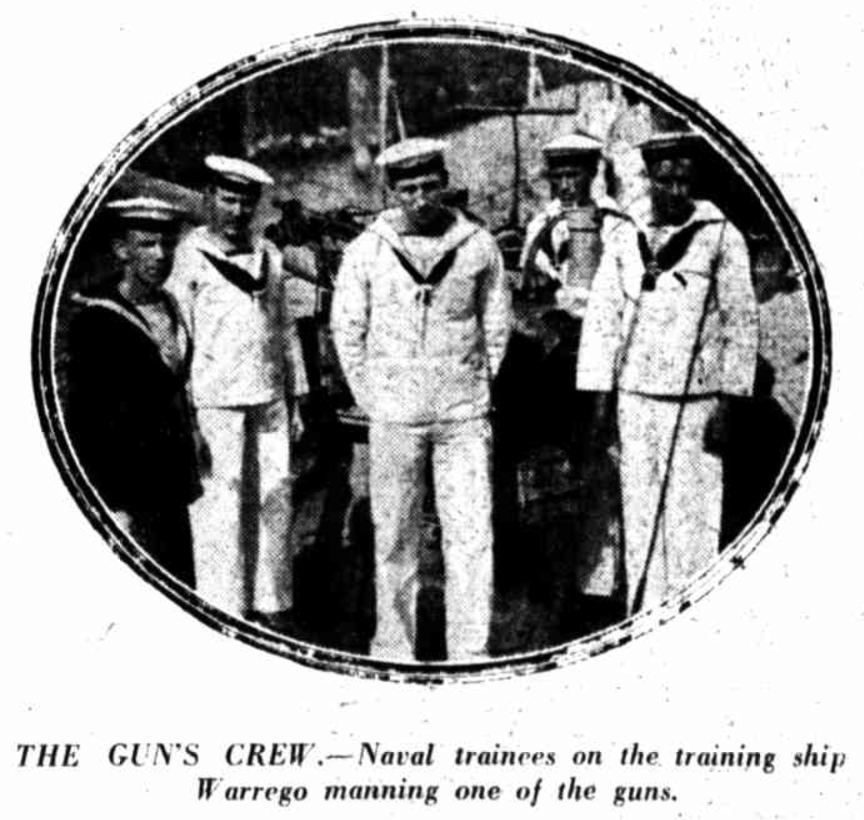Quaint Navy traditions live on

The Illustrated London News ran this obituary for the late Royal Navy Vice-Admiral, Charles Joseph Roderick Ewart, CB (1816-1884). It appeared on page 13 of the 9 August 1884 edition.
By FRANK C. BOWEN
THOUSANDS of men and women who are now joining the naval forces find that, although they thought that they had a fair layman’s idea of the Senior Service, many of the stories that they had implicitly accepted are without foundation, and that many things are true which they would have considered incredible before they joined.
The reason is partly because the Royal Navy, although one of the most up-to-date Services in the world, clings tenaciously to its old ways, traditions, and unwritten laws.
It is not only pride in the history of the Service and the suspicion of all reforms which is a characteristic of the sailor, but because long experience has shown that these curious ways and unwritten laws are most effective in promoting good-fellowship and the comfort of the crew — a very essential matter and not easy to obtain in the crowded conditions of a man-of-war.
The old seaman and petty officer have a position which is relatively more important than that of the old soldier and NCO [ Non-Commissioned Officer ] in the Army, and the keen youngster is more anxious to follow their ways, even though they are often only half-understood.
In spite of his education and scientific training, the modern bluejacket is still something of a race apart, and his enjoyment of that position is one reason for his keenness to maintain tradition.
NAVY’S WHITE TAPE
The merchant seaman will often say that he is on a ship, the naval man is invariably in one. It is his home, and he does not live on it any more than the landsman lives on his house among the chimney-pots.
As soon as the recruit receives his uniform his education begins.
He has probably been told that the three rows of white tape on his blue jean collar are in memory of Nelson’s three great victories, and that the black silk scarf is still worn in mourning for the hero of Trafalgar. Neither has the slightest foundation.
The square collar came into fashion at the end of the 18th Century, when the landsmen who were sent to the Fleet from the gaols and workhouses, or who were picked up by the press-gangs in the streets, were generally in such a verminous condition that their first experience of the Service was to have their hair cropped.
Volunteers and professional seamen were not going to be tarred with that brush, so wore their hair in a pigtail heavily greased; the square collar was to protect their coats.
In those days the sailor loved to decorate his clothing with white tape sewn along the seams and anywhere else that offered the opportunity, so the jean collars were soon decorated.
When the Admiralty appointed a committee to decide on the most satisfactory uniform in the middle of the 19th Century, most of the seamen were still decorating their collars according to their own taste, although the crew of each ship generally followed the same fashion.
Some ships had one row, some two, some three, while the men of HMS Royal Oak had gone to the expense of decorating their collars with a row of oak-leaves.
The committee decided that three rows of tape looked smartest, and that was adopted.
The black silk was worn by seamen long before Nelson was born. It was a regular article in the stock of every ship’s “slop-chest”, intended to be tied round the forehead in action to prevent the perspiration dropping into the men’s eyes when they were manhandling the heavy guns.
When the ship was not in action it was worn round the neck under the collar for convenience as a decoration, and its only connection with Nelson is that the seamen at his funeral took off their black silks and wore them tied round their arms as mourning.
Every man in “free-and-flowing” uniform is a bluejacket, but the blue jacket has not been worn for nearly half a century.
“CAT” STILL CARRIED
Before that it was the most-hated article in the seaman’s kit, a sort of Eton jacket decorated with brass buttons very similar to that worn by the German sailor today, whose uniform was copied from the British fashion in the ’50’s [ as in 1850s ].
As soon as he has cleared his mind of some of his erroneous beliefs, the recruit begins to learn that many things which he thought were as dead as the Dodo are merely inoperative.
It is many years since a bluejacket was flogged, but the cat-o’-nine-tails is still carried in every warship in the traditional green bag, although its use is suspended indefinitely.
Incidentally, this is the origin of the popular proverb about letting the cat out of the bag.
The press-gang is regarded as one of the evil memories of the past, but it is still legal. It may not take any man out of the street, but it never had the right to do that.
EVERY SEAMAN LIABLE
Although it is necessary to pass a new Act of Parliament at the outbreak of each war in order to establish conscription for the Army, every British seaman is liable for service in the Navy, as he has been from the earliest days.
It is only a short while ago that a “sea lawyer” with a sense of humour presented himself at the Admiralty and demanded his official protection from the press-gang, as it was his birthday and he was over the legal age.
His joke caused a very pretty stir among the serious officials of Whitehall; there was no doubt about his being entitled to the document, but nobody knew how to make it out.
One of the minor features of naval life which has caught the attention of the public since the outbreak of the present war is the matter of beards, which have come so much into fashion, especially in the submarine and patrol services.
Beards were formerly very strictly prohibited, nothing more than the mutton-chop whiskers being recognised by the Queen’s Regulations, and for a long time Queen Victoria refused to make any change.
Then an artful naval officer, received in audience, informed her that he heard more profanity and bad language in the half-hour devoted to shaving at sea than in all the remainder of the day put together.
The Queen immediately issued the desired order.
It is necessary to get the permission of the commanding officer before growing a beard or shaving it off again, and no officer or man may change his mind on the subject too frequently.
The man who goes on leave with a fine beard and encounters family objections finds it difficult to convince his wife and daughters that he is not allowed to fall in with their wishes straight away.
NO GUNS FOR GUNNER
The phraseology of the Navy is also curious and often misleading. For instance, the Commander of a battleship does not “command” her, although an officer of Commander’s rank may be in command of a smaller vessel.
In the biggest ships he is second-in-command, and that originated in Tudor days.
At that time the captains of the royal ships were soldiers who had not the least knowledge of navigation, and, as the ships were nearly all borrowed from the Merchant Service their peacetime masters were retained in the Navy to navigate them, with the title of “Master”.
As the number of the small ships grew, economy forbade them all to be given naval captains, so that many of them were left under their mercantile Masters, who then received the rank of “Master and Commander”.
In due course, as the ships became bigger and more complex, officers of this rank, from which the “Master” was soon dropped for convenience, were appointed as second-in-command to assist the captains, in their organisation.
That is only one case. The gunner does not handle the guns, but is concerned principally with the ammunition and stores.
“Night clothing” does not include pyjamas, but is the old uniform into which the men change for their night watches.
The gunroom does not contain guns, but accommodates the midshipmen and junior officers.
The “idlers” are generally among the busiest men in the ship; they do not keep night watch, but are very fully employed on specialist duties through the day.
A “long ship” may be one of the shortest in the Fleet, but one in which it is a long time between drinks. A visitor may remark admiringly on her size, but not on her length; it will be regarded as a slur on his host’s hospitality.
The “one-gun” salute is not a mark of respect, but it is a single gun fired by the ship in which a court martial is being held.
Finally, and this has been a source of infinite bitterness for many years, an officer’s “half-pay” is not nearly 50 percent, of his salary.
The war has revived purely naval slang after a spell when it was very largely replaced by Americanisms culled from films, many of which had little relation to the sea.
It is not all traditional, however; many of the phrases which were used from Nelson’s day, or earlier, down to the last war have been forgotten and replaced by entirely new ones, but any number of the innovations show quite a pretty taste in imagery.
OLD NICKNAMES SURVIVE
Curiously enough, the old Service nicknames for individuals persist, although their origin is forgotten.
All ratings in the Service named “Grey” are called “Dolly” after the popular song of Boer War days, and, while everybody named “Clarke” is nicknamed “Nobby”, as he is in the Army, the name is also applied to all “Ewarts” — “Hewetts”.
Very few remember that the lower deck first applied this name to Admiral Charles Ewart [ Charles Joseph Roderick Ewart ], who was so exceedingly “nobby” or smart that he insisted on his flagship’s grey goose being whitewashed to be in uniform with the white painted deck fittings.
How all “Greens” came to be known as “Shiner”, and all “Bennetts”, “Wiggie”, are mysteries of the distant past, as are so many other matters connected with naval legends and traditions.
— from pages 5 and 16 of “The World’s News” (Sydney, NSW) of 24 July 1943.

Ship’s company of the Royal Australian Navy Daring-class destroyer, HMAS Vampire (II), in about 1966.


